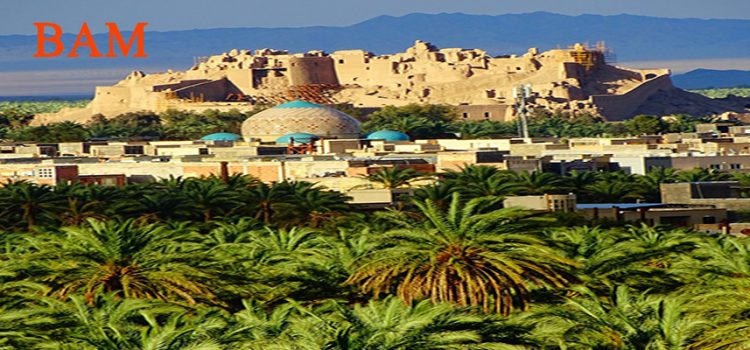Bam is situated in a desert environment on the southern edge of the Iranian high plateau, close to the Pakistan border. Bam lies 1,060 metres above sea level in the centre of the valley dominated to the north by the Kabut Mountains and to the south by the Jebal-e Barez Mountains. This valley forms the wider cultural landscape of the Bam County. Beyond the mountains lies the vast Lut Desert of Central Iran.
The origins of Bam can be traced back to the Achaemenid period (6th to 4th centuries BC) and even beyond. Its heyday was from the 7th to 11th centuries, being at the crossroads of important trade routes and known for the production of silk and cotton garments. The existence of life in the oasis was based on the underground irrigation canals, the qanāts, of which Bam has preserved some of the earliest evidence in Iran (3000). Arg-e Bam is the most representative example of a fortified medieval town built in vernacular technique using mud layers (Chineh ), sun-dried mud bricks (khesht), and vaulted and domed structures. Outside the core area of Arg-e Bam, there are other protected historic structures which include Qal’eh Dokhtar (Maiden’s fortress, ca. 7th century), Emamzadeh Zeyd Mausoleum (11-12th century), and Emamzadeh Asiri Mausoleum (12th century and historic qanāt systems and cultivations southeast of the Arg.

For centuries, Bam had a strategic location on the Silk Roads connecting it to Central Asia in the east, the Persian Gulf in the south, as well as Egypt in the west and it is an example of the interaction of the various influences.

The 2003 earthquake caused the collapse of various sections of the Governor’s Quarters and the upper parts of the defence walls. Notwithstanding, much of the lost fabric was from modern restorations. The materials found at the older levels are well preserved and have now been revealed. The traditional culture for architecture and the city plan have also been preserved, including the continuity in workmanship and know-how for earthen architecture construction. However, the earthquake not only couldn’t destroyed it totally, but also made it more eye-catching to the extent that today a new era of existence has started for Arg-e-Bam.







